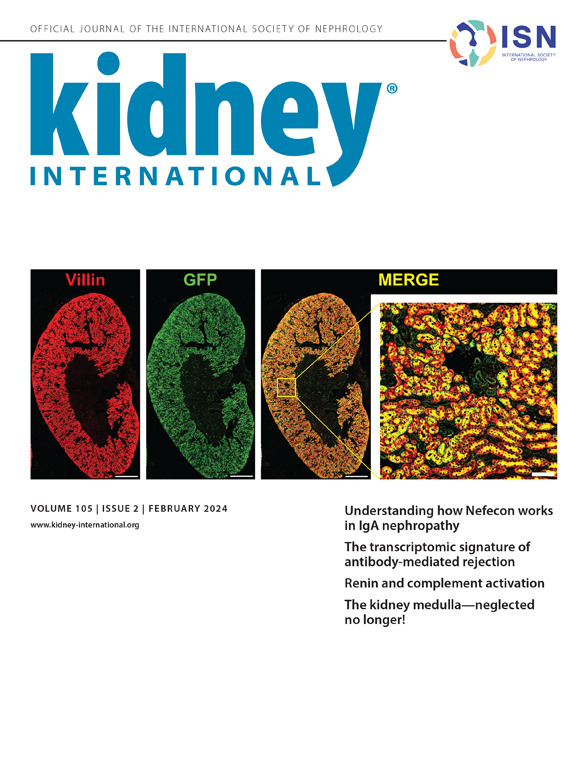Chronic kidney disease–mineral and bone disorder: conclusions from a Kidney Disease: Improving Global Outcomes (KDIGO) Controversies Conference
IF 14.8
1区 医学
Q1 UROLOGY & NEPHROLOGY
引用次数: 0
Abstract
In 2017, Kidney Disease: Improving Global Outcomes (KDIGO) published a Clinical Practice Guideline Update for the Diagnosis, Evaluation, Prevention, and Treatment of Chronic Kidney Disease–Mineral and Bone Disorder (CKD-MBD). Since then, new lines of evidence have been published related to evaluating disordered mineral metabolism and bone quality and turnover, identifying and inhibiting vascular calcification, targeting vitamin D levels, and regulating parathyroid hormone. For an in-depth consideration of the new insights, in October 2023, KDIGO held a Controversies Conference on CKD-MBD: Progress and Knowledge Gaps Toward Personalizing Care. Participants concluded that the recommendations in the 2017 CKD-MBD guideline remained largely consistent with the available evidence. However, the framework of the 2017 Guideline, with 3 major sections—biochemical abnormalities in mineral metabolism; bone disease; and vascular calcification—may no longer best reflect currently available evidence related to diagnosis and treatment. Instead, future guideline efforts could consider mineral homeostasis and deranged endocrine systems in adults within a context of 2 clinical syndromes: CKD-associated osteoporosis, encompassing increased fracture risk in patients with CKD; and CKD-associated cardiovascular disease, including vascular calcification and structural abnormalities, such as valvular calcification and left ventricular hypertrophy. Participants emphasized that the complexity of bone and cardiovascular manifestations of CKD-MBD necessitates personalized approaches to management.
求助全文
约1分钟内获得全文
求助全文
来源期刊

Kidney international
医学-泌尿学与肾脏学
CiteScore
23.30
自引率
3.10%
发文量
490
审稿时长
3-6 weeks
期刊介绍:
Kidney International (KI), the official journal of the International Society of Nephrology, is led by Dr. Pierre Ronco (Paris, France) and stands as one of nephrology's most cited and esteemed publications worldwide.
KI provides exceptional benefits for both readers and authors, featuring highly cited original articles, focused reviews, cutting-edge imaging techniques, and lively discussions on controversial topics.
The journal is dedicated to kidney research, serving researchers, clinical investigators, and practicing nephrologists.
 求助内容:
求助内容: 应助结果提醒方式:
应助结果提醒方式:


